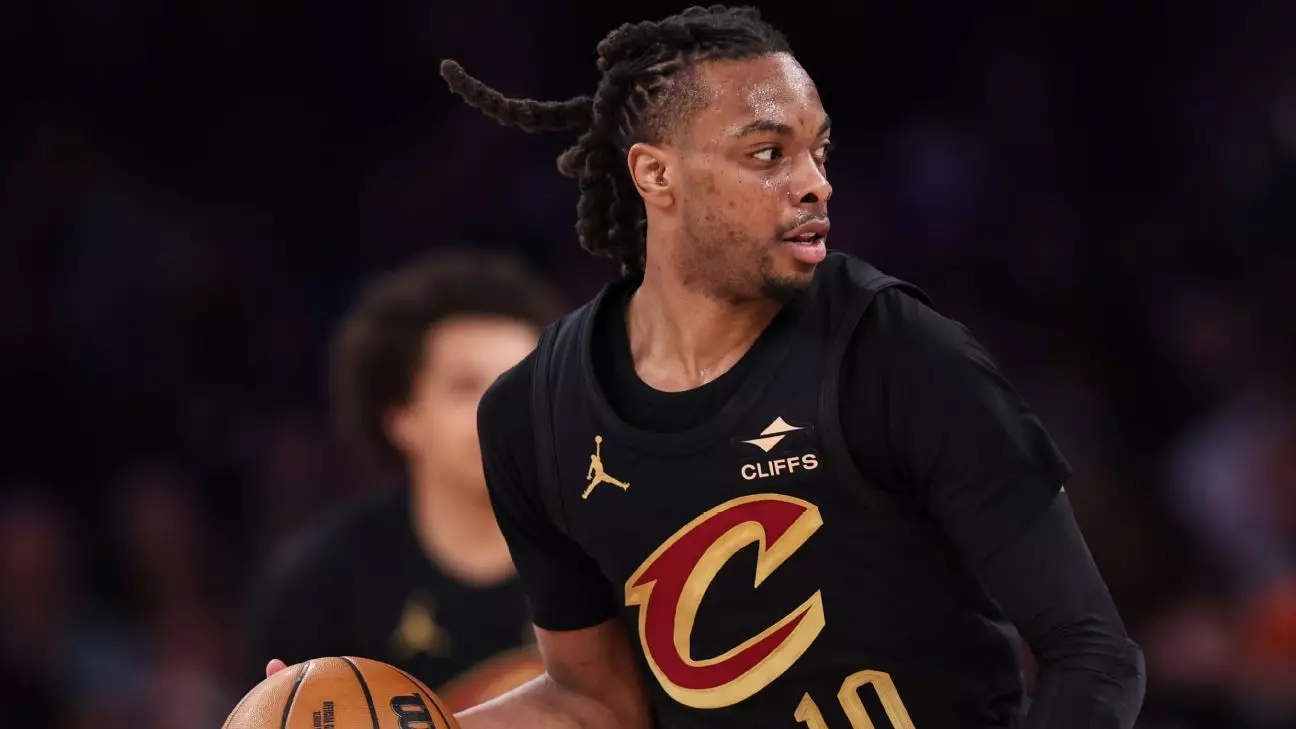As the Cleveland Cavaliers prepare for their crucial Eastern Conference semifinal against the Indiana Pacers, the team’s fortunes appear to hinge on the availability of All-Star guard Darius Garland. Listed as questionable due to a sprained left big toe that has sidelined him for key moments, Garland’s situation exemplifies the delicate balance between physical health and competitive ambition in professional sports. His absence in the closing matches against the Miami Heat underscores the challenges Cleveland faces as they navigate deeper into the playoffs.
Garland is not just another player; he is a pivotal element of the Cavaliers’ strategy. With an average of 20.6 points and 6.7 assists during the regular season, his ability to facilitate offense and create opportunities for his teammates cannot be overstated. Missing the first game of the series against the Pacers would not just be a loss of scoring; it would also disrupt the rhythm and chemistry the Cavaliers have painstakingly developed throughout the season.
Pain Management: A New Norm?
Cleveland’s head coach, Kenny Atkinson, has expressed cautious optimism while acknowledging the reality of Garland’s injury. Notably, he hinted that fans and management should prepare for the possibility that this will be a lingering issue throughout the playoffs. “The toe’s a tough one,” he remarked, implying that managing this form of injury involves not just physical rehab but also psychological resilience. Athletes often face a dilemma: push through pain for the sake of competition or risk worsening an injury in pursuit of glory.
In the high-pressure settings of the playoffs, the decision to play—or not to play—becomes even more complicated. For Garland, playing with pain could detract not only from his performance but also from his long-term health. The precariousness of his situation raises questions about the ethical implications of athletes playing while injured and the expectations from fans and management for them to perform against all odds.
The Ripple Effect of Garland’s Absence
Merrill, who has stepped into a starting role for the last two games, showcases the depth the Cavaliers possess—but does that depth equate to a replacement, or merely a stopgap measure? His contribution in Garland’s absence may help, but it will not fill the unique void left by an All-Star caliber player. Other players will have to step up, and while this can be a time for growth, it also presents risks, as younger or less experienced players are thrust into pivotal moments.
Moreover, the psychological impact of knowing that their leading guard is not completely at full strength might be palpable within the locker room. Team morale, cohesiveness, and confidence hinge on everyone being at their best, and Garland’s uncertain status could loom large over the team dynamic.
In a league where the margin for success is razor-thin, the Cavaliers must navigate these waters judiciously. This situation is emblematic of the challenges that NBA teams face in balancing individual health with the team’s aspirations. Whether Garland steps onto the court in the opening game against the Pacers could significantly shape the narrative for the Cavaliers’ playoff journey. As fans eagerly await updates, the hope remains that Garland’s tenacity and skill can once again shine bright, despite the clouds of injury looming overhead.

